Two million visitors a year are drawn to the heights of the Peruvian Andes to view the pre-Columbian mysteries in and around Cusco. Hubs and I boarded the LATAM Airbus in Lima, Peru, at an elevation of 113 feet above sea level, and eighty minutes later, we were on the ground in Cusco at 10,860 feet. The drastic change in altitude caused the oxygen saturation levels in the air to drop to 87%, making breathing challenging.
No problem. Breathing is highly overrated.
Altitude sickness is a common affliction in Cusco, and portable oxygen tanks are always close at hand. Even the minibar in our hotel room dispensed yellow canisters of oxygen to go. According to the label, one for the road, and Hubs and I would be humming through the Andes at “peak performance.”
We planned to spend a few days in Cusco, adjusting to oxygen deprivation and exploring the ancient capital of the Inca Empire. Designated a UNESCO World Heritage Site in 1983, Cusco was one of the most significant cultural, religious, and political centers in the pre-Columbian Americas.
At least while we acclimated and gasped for air, our minds were occupied marveling at the city’s impressive architectural and engineering feats that defy human explanation.
The Coricancha, the most highly regarded and sacred Inca religious temple, was built in the mid-1400s during the reign of Emperor Pachacuti Inca Yupanqui.
Dedicated to Inti, the Inca god of the sun, the Coricancha’s interior walls were covered with 700 sheets of gold, each weighing 2 kg (4.4 lbs). The present value of the golden wallpaper was $150 million USD. (It goes up and down daily with the price of gold). That is some very extravagant wallpaper!
The REAL wealth was in the TONNES of solid gold statues of deities and sacred objects that filled the Coricancha’s grounds and sanctuaries.
Emperor Pachacuti lavished the temple with a storehouse of gold to keep Inti, the top-dog deity, happy and shining favor on the Inca Empire.
As oxygen-deprived, air-gulping visitors to the Coricancha, Hubs and I feasted our eyes on the stunning 15th-century opulence of Pachacuti’s gold-lined temple walls - right?
WRONG.
The walls of volcanic blocks of rock remained as tightly knit together as they were when they were built in the mid-1400s; however, not a single speck of gold dust remained in the Coricancha when we visited.
What happened to all the gold?
The answer to this question is interwined with the history of the Inca Empire, South America, and Spain.
Emperor Pachacuti was a busy guy with a penchant for building massive architectural marvels. With the Coricancha project underway, Pachacuti turned his attention to a site two miles north of Cusco, situated high on a hill overlooking the city. In 1438, he began the construction of the gigantic rock fortress Sacsayhuamán (click here).
If you aren’t familiar with how to pronounce Sacsayhuamán: Sahx-eh-wom-ahn. If this pronunciation isn’t on target, at least you’ll be understood. (Or, you can pinch your nose and say, “Sexy-woman” and it will sound reasonably close, too.)
Covering an area of 7,413 acres, Sacsayhuamán served as both a military defense structure and a ceremonial site.
The colossal polygonal limestone blocks used to build Sacsayhuamán came from quarries 32 kilometers from the construction site. Defying all reason and explanation, the stones were of astronomical proportions.
Although Sacsayhuamán is in a highly tectonically active zone, the hefty boulders have remained firmly intact for over 500 years and withstood several major earthquakes. Still, the rocks remain so close together that a piece of paper cannot be inserted between them. (Yes, I tried.)
How did the Incas move thousands of enormous limestone slabs 32 km from the quarries to the building site overlooking Cusco?
PeruJungleTrips.com sums up the standard explanation of the rock transportation process in this one statement on their website:
“The stones at Sacsayhuamán were transported using log rollers, levers, inclined planes, and ramps to move the massive blocks from nearby quarries to the construction site.”
Let me make sure I have the story straight.
Although the Incas had no knowledge of the wheel, they knew how to drag millions of pounds of gargantuan limestone slabs across 32 kilometers of terrain using log rollers, ropes, levers, inclined planes, and ramps.
The Incas also knew how to stack the big bruisers - some of which weighed a quarter of a million pounds each - precisely one on top of the other with no mortar, gaps, or space between them.
That’s the “official” story, and they’re sticking with it.
I suspect there’s more to the process, and some vital information has either gone missing or has been deliberately withheld through the ages.
Hubs and I wandered around gawking at the enormous stone blocks. The massive walls lined up in unison, zig-zagging back and forth like striking lightning bolts zapping across the land.
A mystical aura surrounding the Inca citadel sent shivers up my spine and made the hair on the back of my neck bristle. It was a place like no other.
Or, perhaps I was oxygen-deprived and just thought the atmosphere felt bizarre around the mega-rock walls. Maybe everything was business-as-usual at Sacsayhuamán, and I was a tourist nut-bag in desperate need of a few generous SNORTS of “oxygen to go” from a yellow canister so I could get humming at “peak performance.”
Rumors of the Inca Empire's wealth in gold began to surface in Spain around 1500 CE. By 1525, the Spaniards launched regular expeditions to Peru, driven by their greed for the coveted precious metal. The Europeans began subjugating the indigenous people and looting their golden treasures. They also exposed the Inca people to smallpox and other communicable diseases.
Smallpox ROARED through the Inca population, leaving death and devastation in its wake.
Every tragedy is spiced up when there is an evil, wicked queen and an incorrigible villain lurking in the background, and this page of history is no exception.
Queen Isabella of Spain was so DAZZLED by news of the temple of gold in Cusco that she could hardly wait to get her covetous royal hands on it!
(She is not to be confused with Queen Isabella I, who married Ferdinand II of Aragon. The first Queen Isabella died in November 1504, so she was pushing royal daisies in the hereafter while all this coniving was taking place.)
The greedy, self-indulgent Queen Isabella commissioned Francisco Pizarro as governor over Peru and delegated him free rein to “Explore and Exploit the Land on Behalf of the Crown.” He and his expedition of 180 Conquistadors high-tailed to Peru and arrived in Cusco in 1532 CE.
Izzy just snapped her fingers, and her man Cisco had carte blanche to do whatever he pleased in Peru, provided she got the gold she wanted. Cisco took the “EXPLOIT” part of the commission to the extreme by reducing the indigenous population to serfdom, slavery, and death.
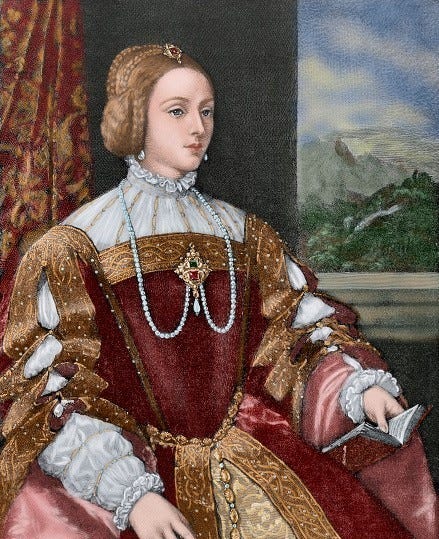
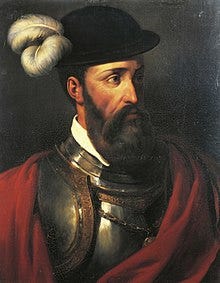
What happened to all the gold? What happened to the Inca Empire

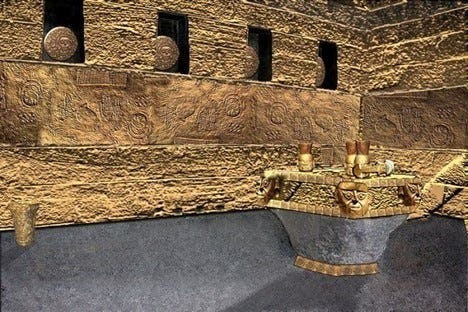
The above photos show what the Coricancha walls look like now compared to an AI-generated photo prepared by artist M. Angel, depicting how the same room would have looked when it had gold wallpaper and gold objects.
The Spaniards seized complete control of Cusco by the end of December 1532. Pizarro and his men looted, dismantled, and melted down ALL the gold from the Coricancha. After filling their own pockets, they sent the rest of the bounty back to Spain. Team Izzy and Cisco pulled off the greatest gold heist in history!
By 1533, the Inca population of Cusco was reduced to a fragment. Those who hadn’t died from smallpox or been massacred were taken captive as slaves. The Conquistadors continued pillaging through the Empire, slaughtering and enslaving the indigenous people. Cargo ships filled with gold treasures sailed nonstop to Spain, and new oro shipments were delivered daily to Izzy’s coffers. Even her clothing was sewn from rich textiles woven with el dorado threading.
Sacsayhuamán marked the site of the final gruesome battle between the Inca warriors and the Spanish Conquistadors in June 1536. The combat was vicious and bloody, with the two opposing forces fighting brutally for several days. Ultimately, the Incas were defeated by the superior battle strategies and weaponry of the Conquistadors.
The vast and mighty Inca Empire fell. Its days of glory and strength were no more. Its splendor was a mere memory. The wind blew around the massive stones at Sacsayhuamán, magnifying its defeat and abandonment.
Could this explain the eerie feeling I sensed around the ruins of Sacsayhuamán?
The smaller stones from Sacsayhuamán were taken to Cusco for use in the building of Spanish houses in the city. According to historian Garcilaso de la Vega, every house built by the Spaniards in Cusco was made with stone from Sacsayhuamán.
Aside from huffing, puffing, and occasionally gasping for air, Hubs and I acclimated easily to the higher altitude of the Andes Mountains. Cusco was a fascinating city to spend a few days adjusting to oxygen deprivation.
A popular dish served on the menus in finer restaurants was “Cuy al Horno"
If you look closely, you will figure out what it is. I could not convince myself to give this dish a try. What the Peruvians eat as a delicacy, my kids had as pets.
While exploring the sites of the ancient city, we learned the Spanish Conquistadors did NOT destroy ALL of the Inca Empire. There was one place, about 50 miles northwest of Cusco, remotely nestled in the Andes, that the Spaniards missed.
The preserved destination was Emperor Pachacuti’s Royal Estate and Private Family Retreat. Based on what we had seen in the Coricancha and Sacsayhuamán, Pachacuti’s third project was guaranteed to be spectacular!
The best was yet to come, as Pachacuti spared no costs and cut no corners. Intrigued, we made plans to leave Cusco the next day and venture further into the Andes.
To Be Continued… Next Episode of Expect the Unexpected









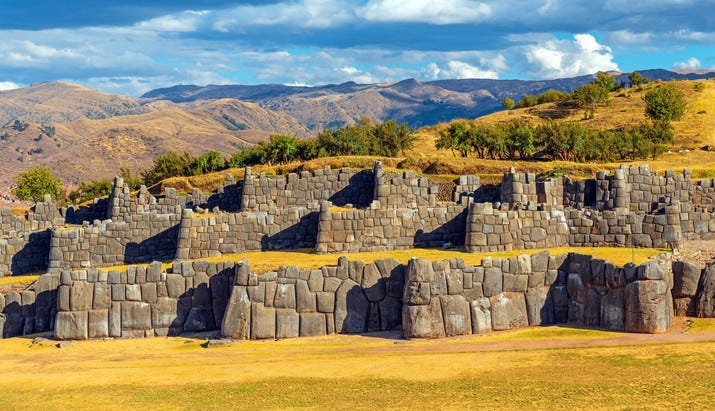
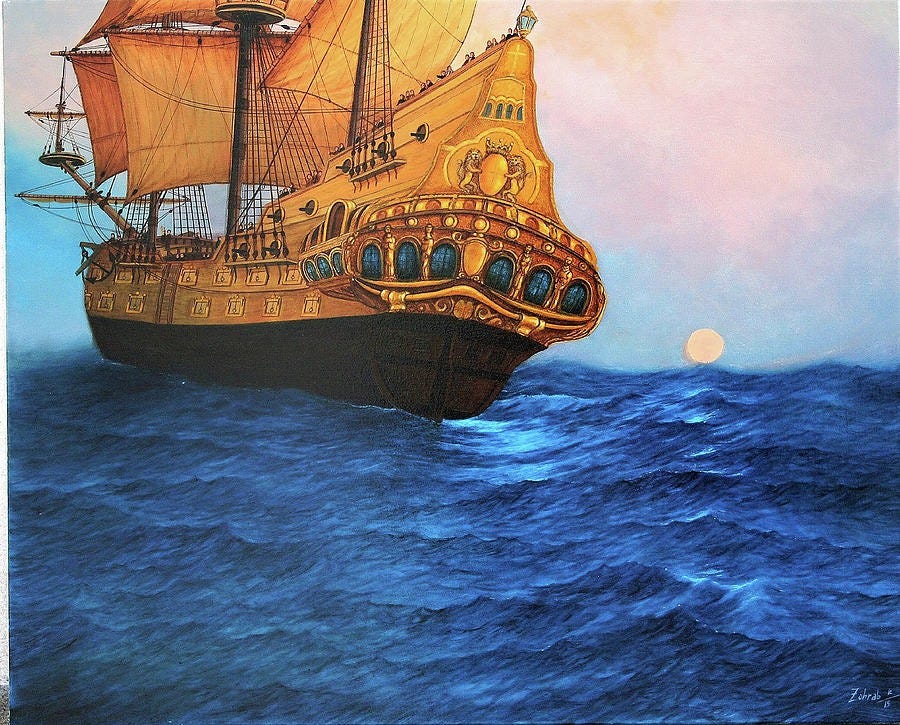


An amazing story. Colonial Europeans left a lot of damage and death in their wake. Sadly, this was an oft-repeated pattern. So good to understand pre-Colombian marvels through your experiences.
Interesting story. The story behind the rock movement is amazing.
I will admit I had to look up Cuy…not quite what I thought it was, and I’ll just leave it at that and no thanks.